Customer satisfaction informs you about customer experience. It tells how satisfied your customers are with your products, services, and capabilities. Along with product reviews and ratings, customer satisfaction helps you improve your services, develop your products, and make the overall experience with your site more user-friendly.
Here at Survicate, we are obsessed with client satisfaction, and you should be, too. After all, providing high-quality products, services, user experience, and customer care brings money to the bank.
But, how do you find out if your customers are truly satisfied? It's simple! Start sending customer surveys frequently and asking the right customer satisfaction survey questions.
In this article, we will show you 21 perfectly designed examples of customer satisfaction survey questions for SaaS and free, ready-to-use survey templates. Depending on their goal, we divided the questions into four groups:
- Product feedback
- Customer effort while dealing with the website and the product
- The position of your company against the competition
- The general experience with your company

What is a customer satisfaction survey?
A customer satisfaction survey is a tool for collecting customer feedback regarding your products, services, and overall customer experience. It consists of a series of questions designed to measure how satisfied your customers are with your product, service, support.
The primary goal of a customer satisfaction survey is to identify areas where you’re going great and what needs improvement.
By analyzing the responses, you can gain insights into your customers' needs, and pain points, to make data-driven decisions about your offer as well as to build stronger customer relationships.
Types of questions to use in a customer satisfaction survey
There are several types of survey questions that you can use to gather insights. Each type has its own strengths and weaknesses, and the choice of customer survey questions depends on the specific goals and requirements of the company.
Multiple-choice questions
Multiple-choice are survey questions that present respondents with a question and a list of predefined answers to choose from. As the survey responses are standardized and can be quickly aggregated, this format allows for easy data collection and faster analysis.
Best used for:
- Gathering quantitative data on specific aspects of products or services
- Identifying customer trends and behavioral patterns
- Comparing customer satisfaction survey results across different segments or time periods
Open-ended questions
Open-ended questions allow respondents to provide their answers in their own words. It is valuable for gathering qualitative data and gaining deeper insights into customer sentiment. They work great as follow up questions.
Best used for:
- Collecting detailed feedback and uncovering new issues or opportunities
- Understanding the reasoning behind the Customer Satisfaction Score (CSAT)
- Identifying areas for improvement based on customer input
Hint: Although open-ended questions are a great tool for gathering in-depth customer feedback, analyzing survey responses can be a headache. Quick fix? Use Survicate's Insights Hub, an AI feature, to have your open-text feedback quickly categorized into key points in no time.
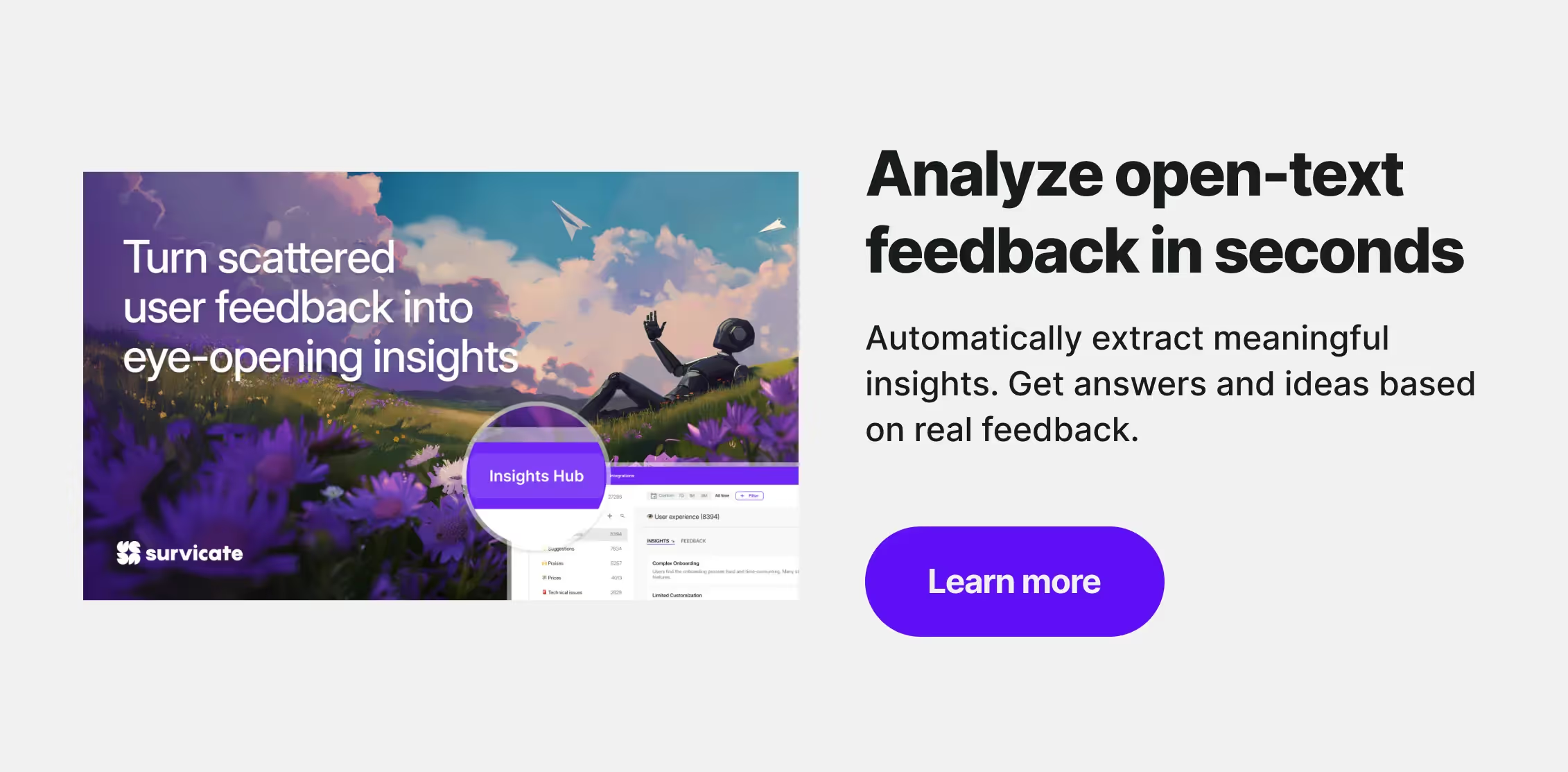
Customer Satisfaction (CSAT) survey
The most basic way of measuring customer satisfaction is by using the CSAT question. Here are the questions it comes with and how you should use it.
1. How satisfied are you with [product name]?
This question measures customer satisfaction overall. Responses will help you discover your customers’ needs and give you ideas for changing and improving. The score is a widely recognized customer experience metric. It helps predict company growth and reduce customer churn.
Try out our free to use Customer Satisfaction survey template
This question is usually measured on a five-point rating scale (however, some choose to use other Likert scales, eg. 1-to-10 rating scale surveys). You can use numbers or a star rating system. With a tool such as Survicate, you can also try the smiley scale.
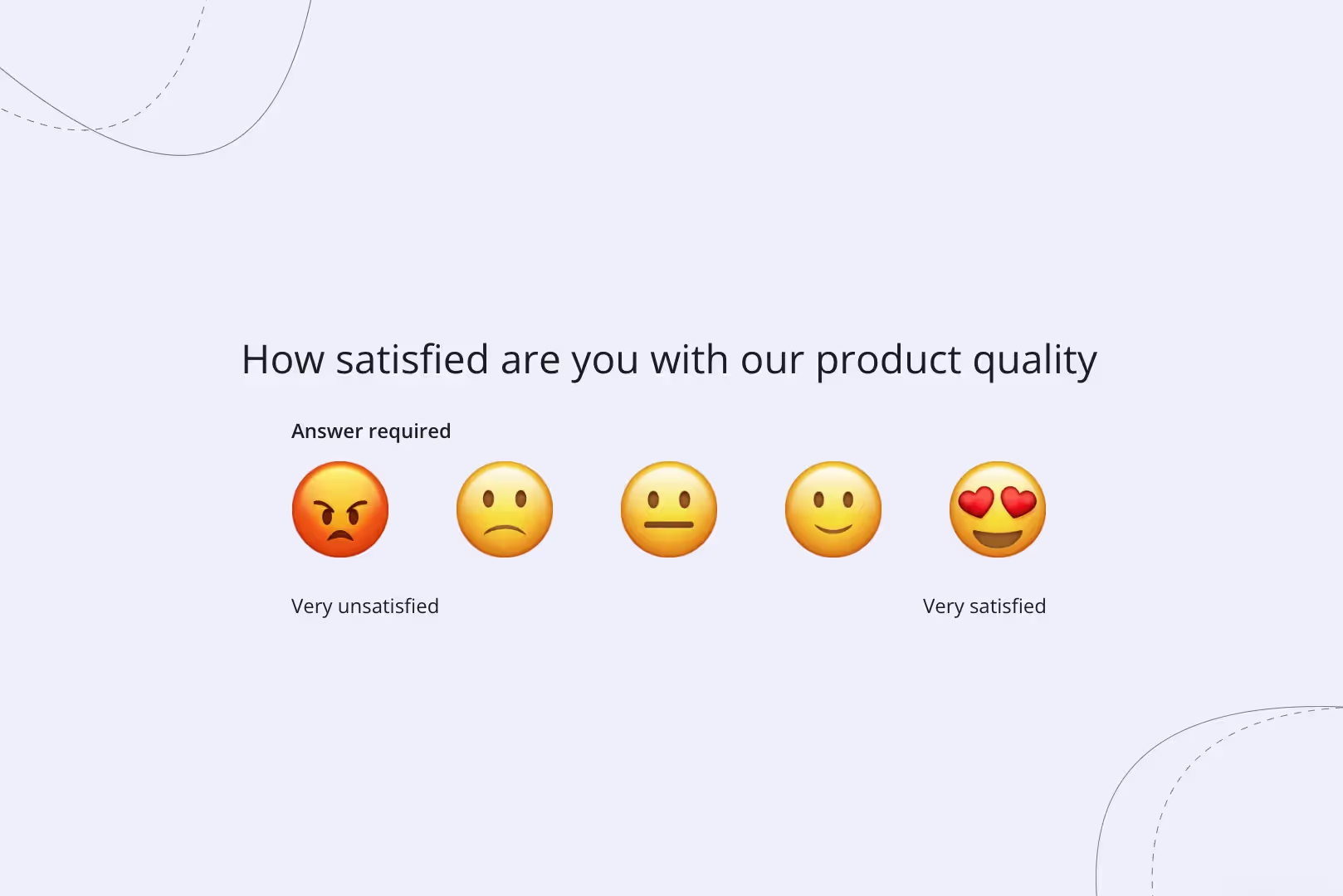
Product feedback survey questions
Simply put, a product survey is a powerful way to discover what your customers think about the products or services you offer.
Running surveys before launching a new product means you get to see what people expect. Product research cuts the risk of developing good-for-nothing features.
Plus, depending on the survey questions you include, it can help you create and design what you’re making.
You can also use product feedback surveys for existing products to see how users enjoy the experience. So they’re always helpful.
2. Which of the following words would you use to describe our product?
Why should you care how people would describe your product? Because it’s an important issue when your product gets described as ‘buggy’ instead of ‘life-saving.’
If you don’t want to give your users any suggestions, you can use the open-ended variation of this customer survey question and ask "How would you describe our product?”.
Answers to any of those will show you how well you communicate your value proposition and product vision to users. If your goal is to provide them with the world’s most sophisticated graphics software and people describe it as ‘Paint with 1 cool feature,” it means that the communication is broken.
Hint: Check what are the most common positive words used to describe your product. If they are very frequent, it may indicate that this is what your customers are looking for in your product. You can use such words in your future marketing campaigns.
💡 YOU MAY BE INTERESTED IN: Product research survey templates library
3. How well does our product meet your needs?
This broad product question is nonetheless specific enough to provide actionable results. Offering a product or service that meets customer needs is a prerequisite to providing high customer satisfaction. If the product doesn’t meet the needs of users they are more likely to churn.
Hint: To make this customer feedback question even more actionable, ask the following two questions.
4. Which 3 features are the most valuable to you?
This question is vital for SaaS companies. Their products tend to offer dozens of features and most of the customers use only a handful of them.
Researching which ones are the most important and valuable to users will help you understand how customers interact with your product and what they really need.
Don’t be surprised when people say that the most important to them are features you consider secondary. We discovered exactly this with our exit intent survey—a simple feature that turned out to be a must-have for many customers.
5. What are the 3 most important features we’re missing?
Offering exactly what your customers need helps improve retention. If the product doesn’t offer everything your customers need, sooner or later they will find another provider.
The same goes for e-commerce—customers are more likely to return if you offer what they are searching for and want to buy.
Answers to this customer survey question will help you minimize risks associated with building a product roadmap or planning expanding inventory.
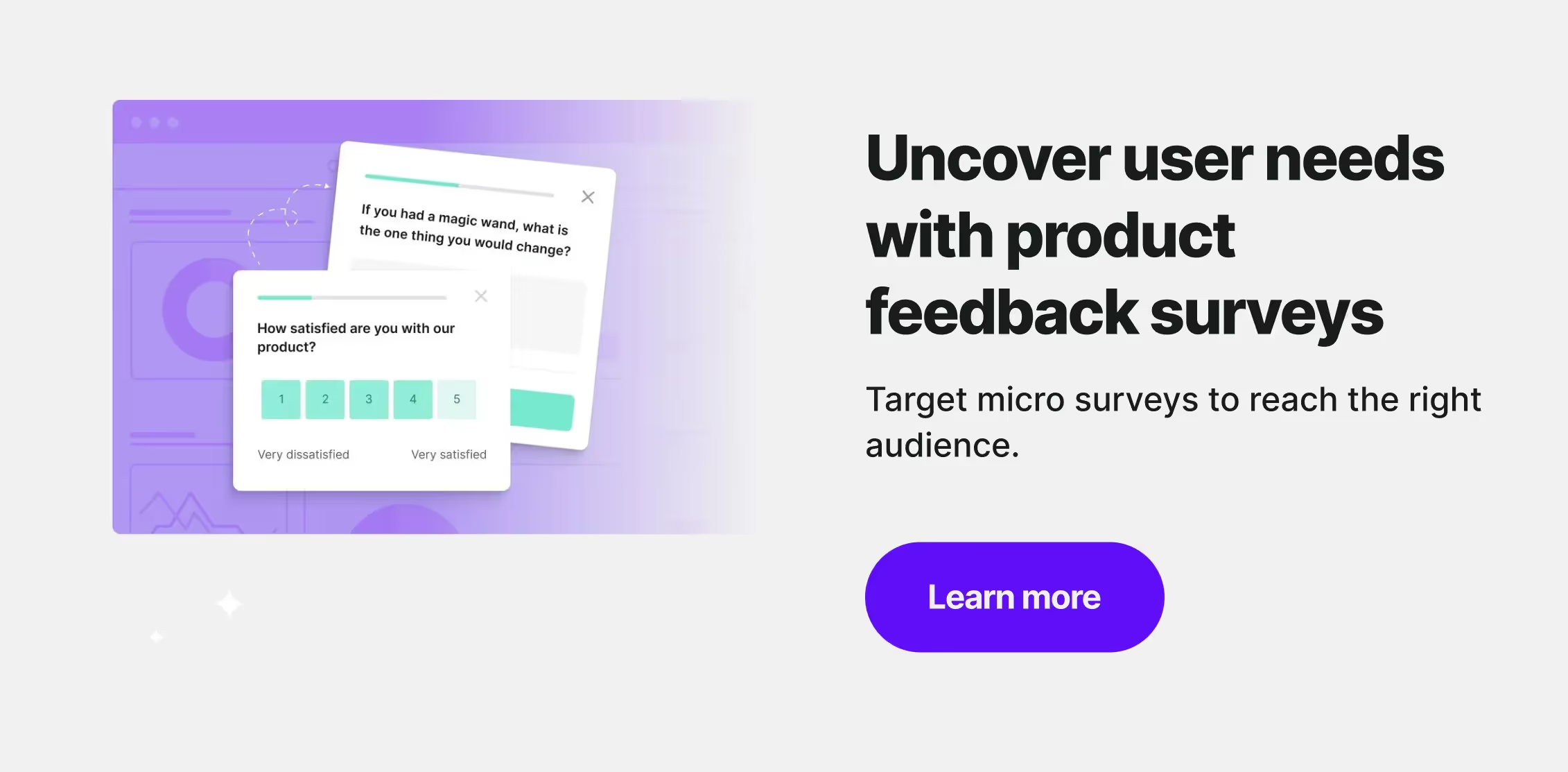
6. If you could change just one thing about our product, what would it be?
This is a variation of question 4. This time you're asking about just one change your customers would like you to introduce.
Now, you're not considering consider any missing features. What you do take into account is that your customers may have very specific needs regarding the products you already have.
As with the question above, the main purpose is to improve customer retention. Take into consideration all the suggestions made by your customers.
Firstly, focus on the most frequent ones. Act on any feedback you receive as failing to do so is a mistake that may cost you too much too soon.
7. What problem would you like to solve with our product?
This question asks for information that usually cannot be gauged by analytics which is the type of solution your customers search for.
Knowing the answers to this question allows you to focus on the strongest features of your product and helps to prioritize any future improvements that could be made.
Hint: It’s great to ask this question even before finalizing the sale. Your potential customers might be looking for something different than what the product they've picked offers.
If you have other products that would suit their needs better, it’s great to point them towards them before it’s too late and they get disappointed with a product that was not designed for what they actually need.
8. How would you rate the value for the money of the product?
That is a very valid customer satisfaction survey question. First and foremost, you should use it while considering any changes to the pricing of your product or service.
If the feedback you receive proves that your customers think that your product is too expensive, you should definitely reconsider your plans to increase your prices. Maybe you could reach your financial goals by introducing some sales or discounts instead.
Hint: It’s great to ask your customers these questions after they've used your product for some time. You might want to follow up with them after a finalized purchase, e.g. two weeks or one month after the sale.
Further Reading: Top 10 Product Surveys and Product Survey Questions
Customer Effort Score (CES) survey questions
9. How easy is it to navigate our website?
Try out our free to use Customer Effort Score (CES) survey template
This is a must-have question to use when there are any changes in the UX design of your website. What you consider innovative, easy, and user-friendly, may not be seen the same way by your customers.
Take into consideration any feedback you receive. Unheard complaints from your users may result in churn, so make sure they are happy with what they see and find on your website.
When it comes to new users or potential customers, it is also great to ask them this customer satisfaction survey question.
Your customers may see your website from a totally different perspective. It is worth taking their opinion into consideration.
10. Were you able to find the information you were looking for on our website?
It’s obvious you want your visitors to find the information they need as easily and as quickly as possible. The happier they are with the navigation of your website and the time they take to get the information they need, the higher the chance they will return and bring new customers with them.
Hint: If there is certain information that seems to be particularly hard to find for your visitors, make sure it’s somewhere they will have quick access to. It may be worth a shot to add another section to the menu that would link directly to that subpage.
11. How much effort did you personally have to put forth to handle your request?
Customers’ need for support is the one thing that you should always take into consideration, whether it's with your website or the product. It’s crucial that your customers are able to fill their complaints and get support quickly.
Quick actions to fix bugs and support your customers can enhance retention and make your workflow much smoother.
12. How did this effort compare to your expectations?
This is a satisfaction survey question that can give you a clear indication of whether what you are doing is a reflection of customers’ needs. If the effort your customers had to put in was greater than they expected, it should give you some food for thought.
It may be beneficial to reconsider the stages where your customers faced difficulties. Maybe some processes need simplification?
It’s possible that your customers expected your product or service to be more difficult than it really is. If you managed to exceed your customers’ expectations, keep going, and keep moving forward!
Hint: Send this question, along with question number 10, in a follow-up survey after providing customer support. It should happen no later than a day or two afterward to get a fresh insight into the quality of provided support.
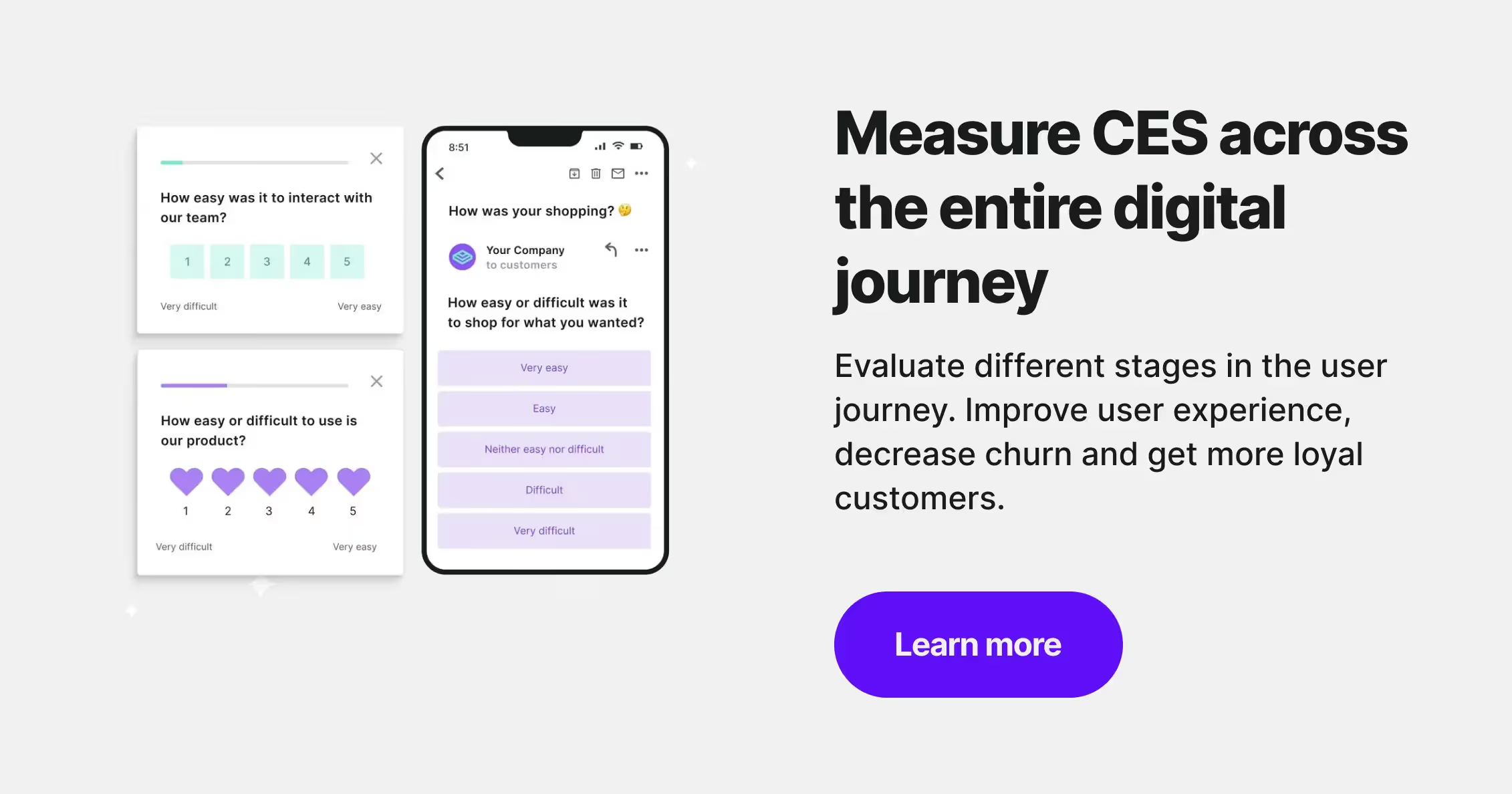
13. How responsive have we been to your questions or concerns about our products?
This customer satisfaction survey question is wonderful at the end of any interaction with a customer that required support. This is a clear indicator of making sure you spend enough time supporting them to make them feel well taken care of.
14. To what extent do you agree with the following statement: The company made it easy for me to handle my issue.
This customer survey question is great because it encompasses a lot of issues at the same time. You can use it to monitor your customers’ overall experience with your website, your products, or any requests they may have.
Allow them to, first, give a specified rating and, later, to express their opinion in their own words. Any feedback you may receive in this case is very valuable, as it gives you information on whether there are any hot spots in your workflow that require immediate action.
Hint: As with questions 10, 11, or even 12, this customer satisfaction survey should be sent to your customers very soon after providing support. The fresh perspective can give you a clear indication of what you are doing right or wrong.
Feedback on your position against your competition: survey questions
15. Compared to our competitors, is our product quality better, worse, or about the same?
This is a wonderful satisfaction survey question: it’s straightforward and very measurable. It gives a very clear image of the quality of your products in comparison with your competition.
It may and should be followed by questions that will go into greater detail on your customers' opinions, but it is a great starting point for taking any further actions.
Hint: Send such customer satisfaction survey somewhere between two weeks and one month after the purchase. Let your customers take some time with your product and get to know it a bit better before judging it against your competitors.
16. Why did you choose our product rather than a competitor’s?
Here, you ask for information on the things that differentiate your product from your competition. You want to know what tipped the balance in your favor.
It’s not only important to know what can be improved, but also what is noticed by your customers as good and valuable. You want to take this into account while considering any changes or improvements in the strategy of your product.
17. Which other options did you consider before choosing our product?
You may think you don’t need this customer feedback question to know what your competition is. The truth is, it’s good to know exactly which products your customers believe to be your competition.
Sometimes they take into account companies that you would never think of.
It is especially useful to know if they happened to compare you with a totally different type of product. Then, it is worth a while to check if your communication with potential and current customers creates a clear image of your product that is coherent with your own vision.
Besides, the odds will be in your favor if you use the feedback to constantly improve what you provide to your customers and make sure that you are a better option than your competitors.
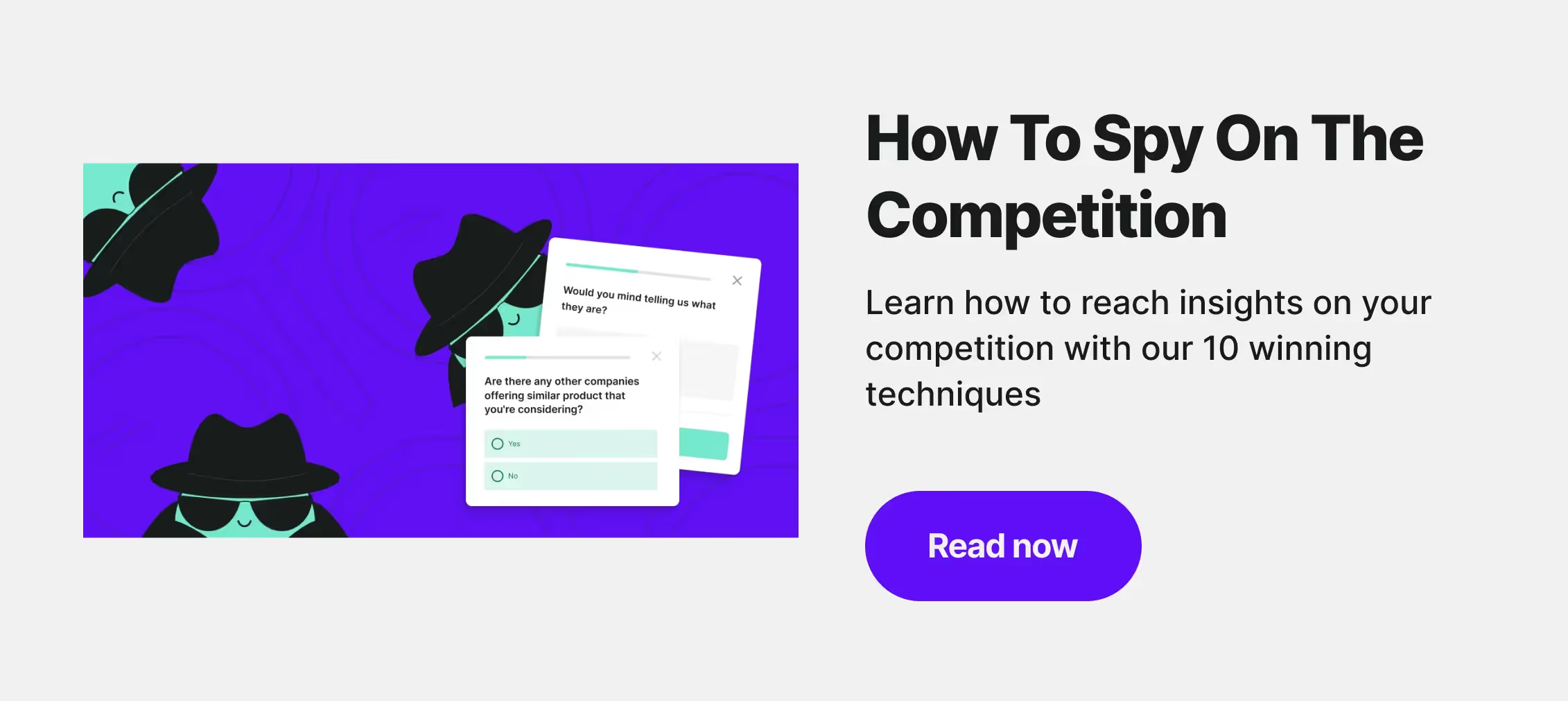
Feedback on the general experience with the company: survey questions
18. On a scale from 0 to 10, how likely are you to recommend our company to a friend or colleague?
This simple customer feedback question (followed by the question ‘Why?’) changed the way marketers see customer satisfaction. Net Promoter Score®, otherwise called NPS, introduced hard data to the world of quantitative data and assumptions.
Measuring and improving your NPS should be the first step in improving customer satisfaction.
Recommended reading: What is Net Promoter Score? The Guide to Top NPS Surveys
Hint: The standard for NPS is to research it using email surveys. However, if you run a news website or other type of business where you don’t really have customers, NPS can also be effectively used. Just run the survey on a website using targeted website surveys.
Target either returning users or use the more elaborate technique based on viewed URLs or cookies.
19. How likely are you to buy again from us?
Why bother researching repeat purchase intention when you can see in Google Analytics how many people actually bought something again? However, GA won’t help you if you’re just starting a business or if you sell durable goods.
Think about cars or furniture. People don’t buy them once a month. So, if you want to see how many customers will come back, you need to wait as long as several years to get the data. But you can capture intent sooner. Just ask your customers.
Hint: Send such client satisfaction surveys to your customers on a regular basis, e.g. once a year, depending on your industry and Customer Lifecycle. The best idea would be to observe the medium frequency with which your customers are making their purchases.
Observe trends and find out what are the reasons for increasing or decreasing the intent of buying again. Plus, you can then check how answers translate into actual acquisition. It will allow you to build a model of repeat purchases.
It will just require integrating your survey tool with Google Analytics or a similar tool you’re using. Learn more about this in our article on measuring customer satisfaction.
20. What would you say to someone who asked about us?
You should not be fishing for compliments with this customer survey question. What you can measure here is the customer’s general perception of your product and your brand. It will help you to check if what you consider your company to be is really what your customers truly see.
It will help you specify the image you want your company to have and implement actions that will allow you to achieve it.
21. What else would you like us to know?
This is a truly universal customer feedback question. No matter what the subject of your survey is, it is always valuable to ask if your customers have anything else to say.
It can give you additional insights, sometimes on issues that you would not expect. This, in turn, allows you to take necessary actions much more rapidly.
Hint: You can either send this customer satisfaction question in a targeted website survey (e.g. after the website visitors respond to your questions regarding the pricing while on the pricing page), in-message surveys via email (either with the follow-up surveys after the purchase or providing the customer support), or in your exit/return intent surveys (it can give you the actual answer why they decided to churn or return the product).
Recommended reading: If you are working in marketing, spend another minute to read Top 10 Marketing Surveys and Marketing Survey Questions.
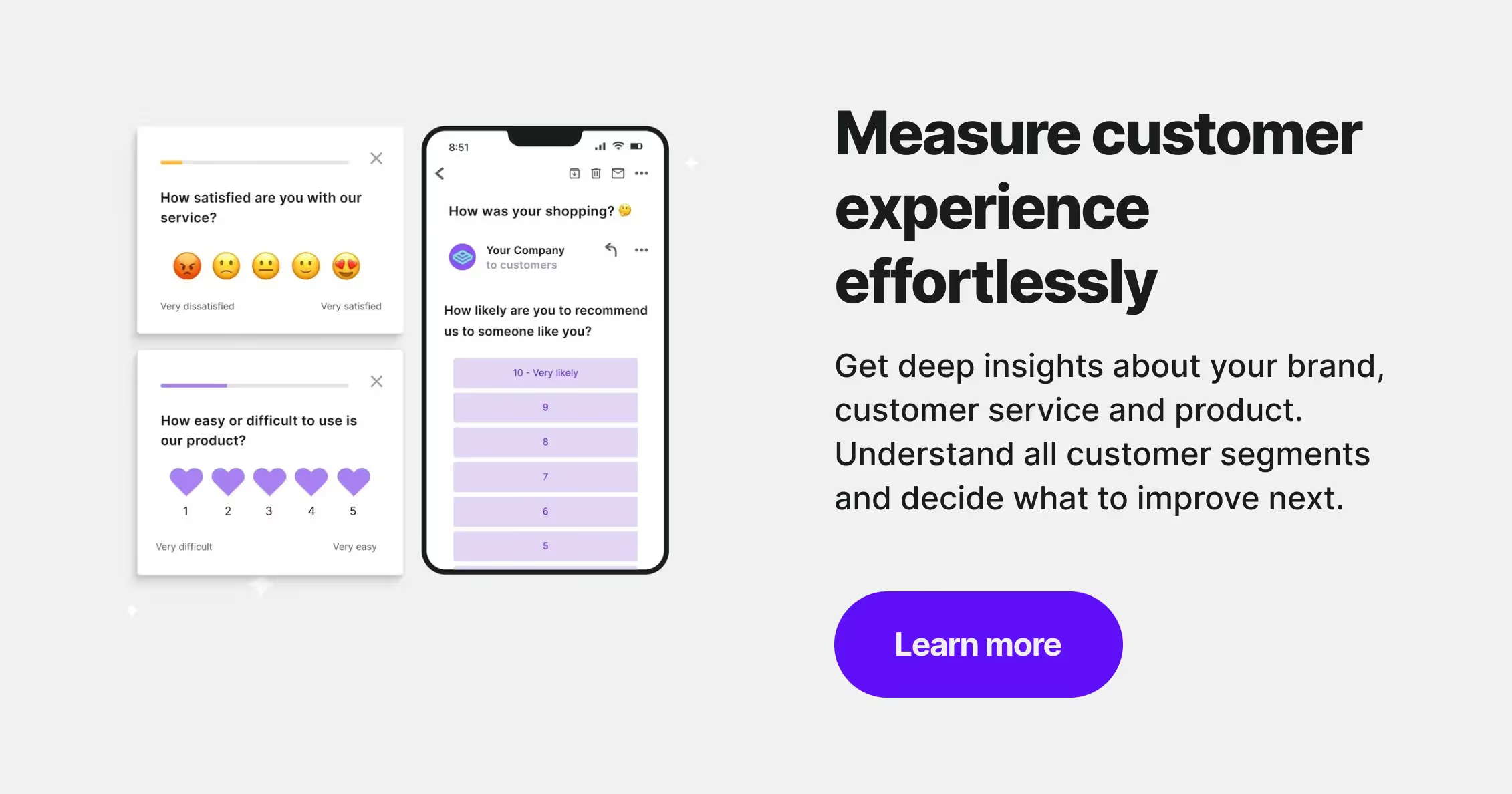
Why are customer satisfaction surveys important?
Customer satisfaction surveys are essential because you can check if providing the best customer service or product checks out with reality. You can keep a high level of customer satisfaction that can be a strong predictor of customer retention, loyalty, and product repurchase by quickly responding to negative experiences.
Satisfied customers are more likely to purchase again and recommend the shop to their friends and coworkers. A loyal customer is worth even up to 10 times more than their first order.
Check out our infographic on the importance of customer satisfaction for more statistics that prove you can't ignore measuring your clients' happiness!
How long should a customer satisfaction survey be?
Customer satisfaction surveys should be as short as possible. No one wants to spend 30 minutes answering questions. People are busy, your customers/leads included. Surveys with 1-3 questions have the highest average completion rate (83.34%).
Think hard about what you want to achieve with your survey or what information you want to get. The more questions your questionnaire includes, the longer it takes to fill it in, the lesser the chance your respondent will complete it, especially if it's a mobile app survey since mobile users tend to have shorter attention spans.
FURTHER READING:
- How To Get Survey Completion Rate of Over 80% [Real Study]
- How To Get People to Take Your Survey & Get More Responses
- Top 11 Survey Incentive Ideas to Use Without Breaking the Bank (Ultimate Guide)
When should you send a survey to your customers?
To get the most reliable answers, you should send satisfaction surveys to your customers right after they have experience with your products or services—it's called a post-purchase survey.
This way, your customers' experience will be fresh enough, and you’ll be able to make sure you’re offering a perfect experience or quickly make amends. On the other hand, you want to measure customer experience with your product or services constantly, so we suggest you set up customer satisfaction surveys on a regular basis (daily, weekly or monthly). Just don't be too offensive to your customers.
Free customer satisfaction survey templates
Survicate is a powerful customer satisfaction tool. Here are the top 13 ready-to-use survey templates used by Survicate customers - so you never run out of ideas on what survey to run next.
- NPS (Net Promoter Score) - Ask how likely customers are to recommend you. Predict repurchases and referrals.
- Product-Market Fit - Discover what’s the key benefits people get from your product. Build products people love.
- Website Experience - Get people to rate your website’s usability, then make the right improvements!
- CSAT (Customer Satisfaction Score) - Establish if customers are happy with your product or service. Fix what’s not working well.
- CES (Customer Effort Score) - Measure if doing business with your company is as easy as pie.
- User Experience - Ensure your users are happy with the experience they get.
- Brand Awareness - Validate your product position on the market.
- Churn Reason - Reduce churn by collecting insight on why your customers cancel their accounts.
- Exit Intent - Uncover why visitors leave your website or product. Remove the obstacles to reduce lost leads.
- Reader Interest - Get new content ideas. Find out what your audience would like to read about next.
- Buyer Personas Research - Learn more about your leads and customers so you can sell to them more effectively.
- Content Rating - Establish if your audience enjoys your content, and what you can do to make it better.
- How Did You Hear About Us - Find out where your clients first came from and which channels are worth investing resources in.
How brands use customer satisfaction surveys to get more value
Pranamat
Pranamat used surveys to automate its Net Promoter Score (NPS) collection and enhance brand advocacy. By integrating Survicate with ActiveCampaign, Pranamat automated NPS surveys that were triggered post-purchase and raised the survey completion rate to over 90%.
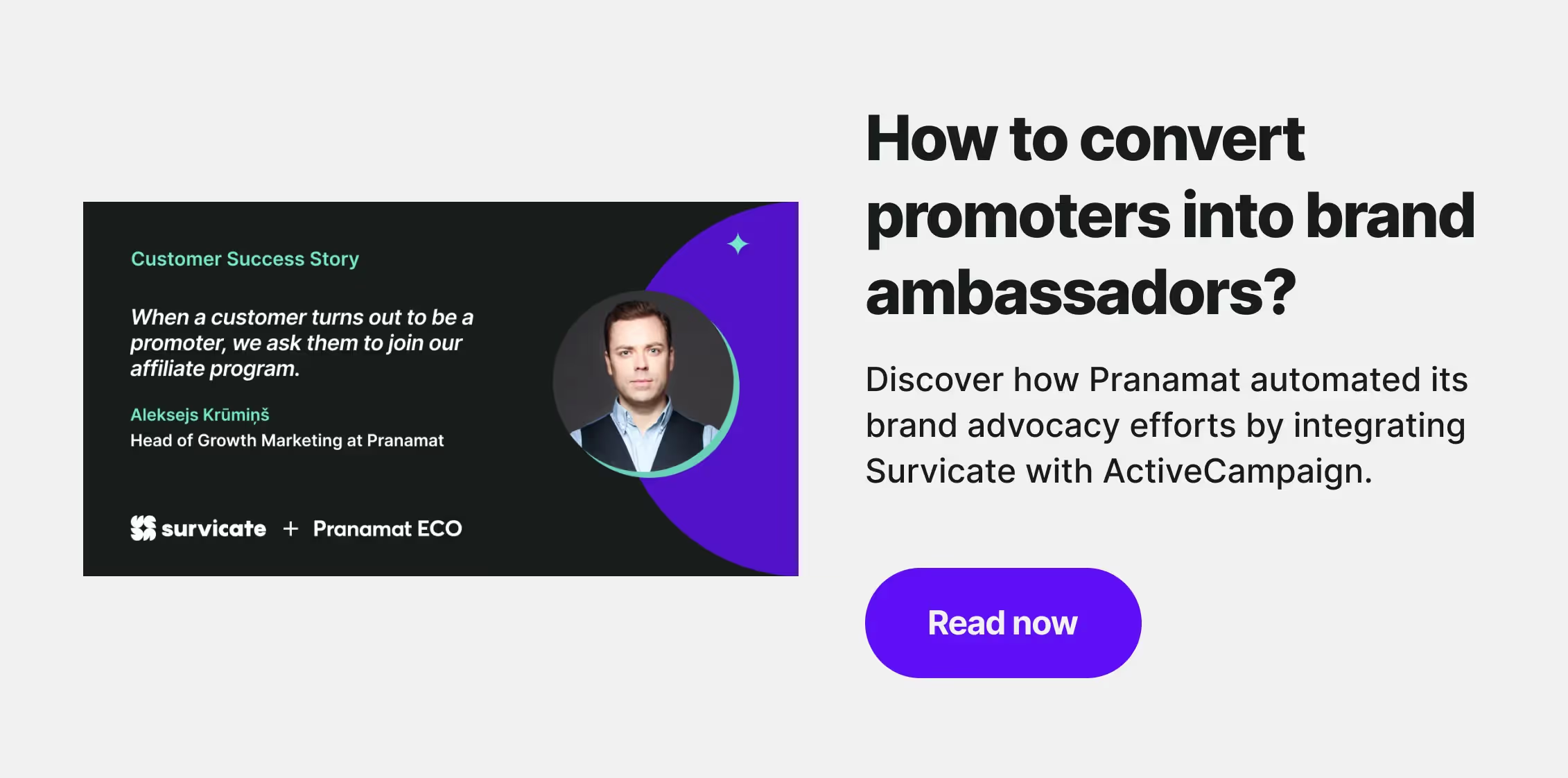
The company identified promoters and invited them to join its affiliate program or leave a review. This approach led to a significant increase in Facebook reviews, boosting Pranamat's rating to 4.9 out of 5. Additionally, detractors were contacted for feedback, allowing Pranamat to address concerns directly and potentially convert detractors into promoters.
This strategy resulted in affiliate program's growth, demonstrating the effectiveness of using customer feedback for brand advocacy.
Hitta.se
Hitta.se used Survicate's NPS and CSAT surveys to improve customer satisfaction and engagement. Initially, Hitta measured customer sentiment with NPS surveys to establish a baseline and identify areas for improvement. To close the feedback loop, they implemented changes across their processes, resulting in a 35% increase in NPS.
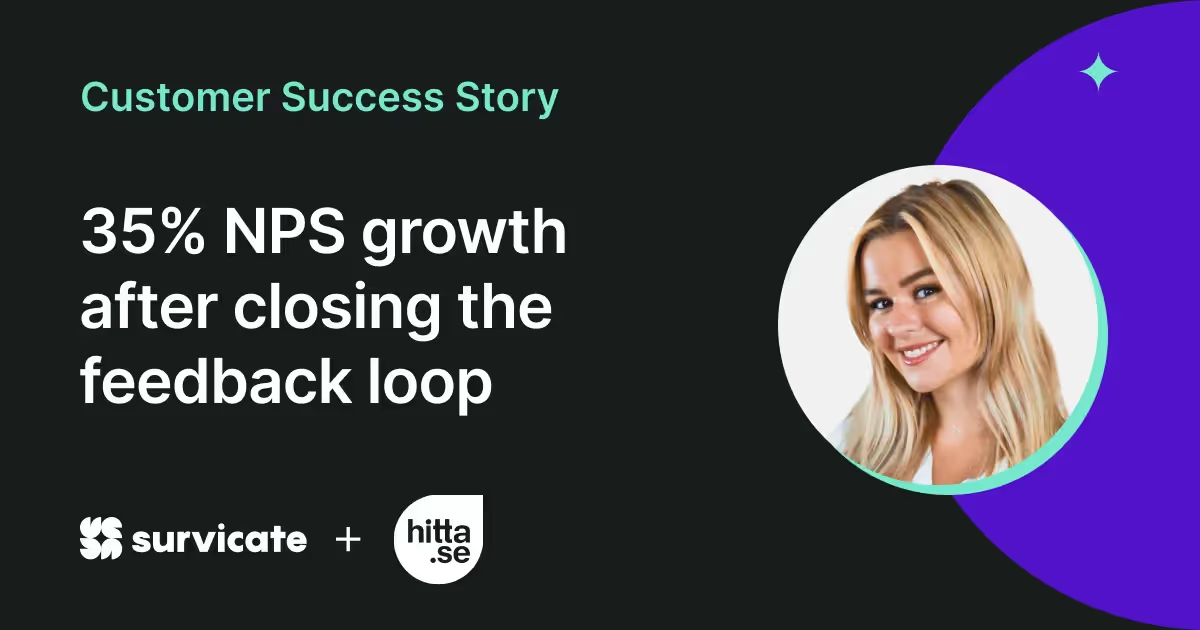
The company sent CSAT surveys after interactions with its Customer Service team, helping to evaluate agent performance and ensure ongoing customer satisfaction.
By actively addressing feedback from detractors identified through Survicate, Hitta was able to engage with dissatisfied customers and make adjustments to better serve them. The combination of regular NPS tracking and transactional CSAT surveys allowed Hitta to continuously refine its customer experience and improve overall satisfaction.
3. ParkBee
ParkBee used Survicate’s customer satisfaction (CSAT) surveys to optimize its urban parking services. By collecting feedback after each parking session, ParkBee was able to analyze the entire customer journey—from booking to leaving the parking area. This approach allowed them to gather over 10,000 responses per month, leading to a 20% reduction in customer service contact requests.
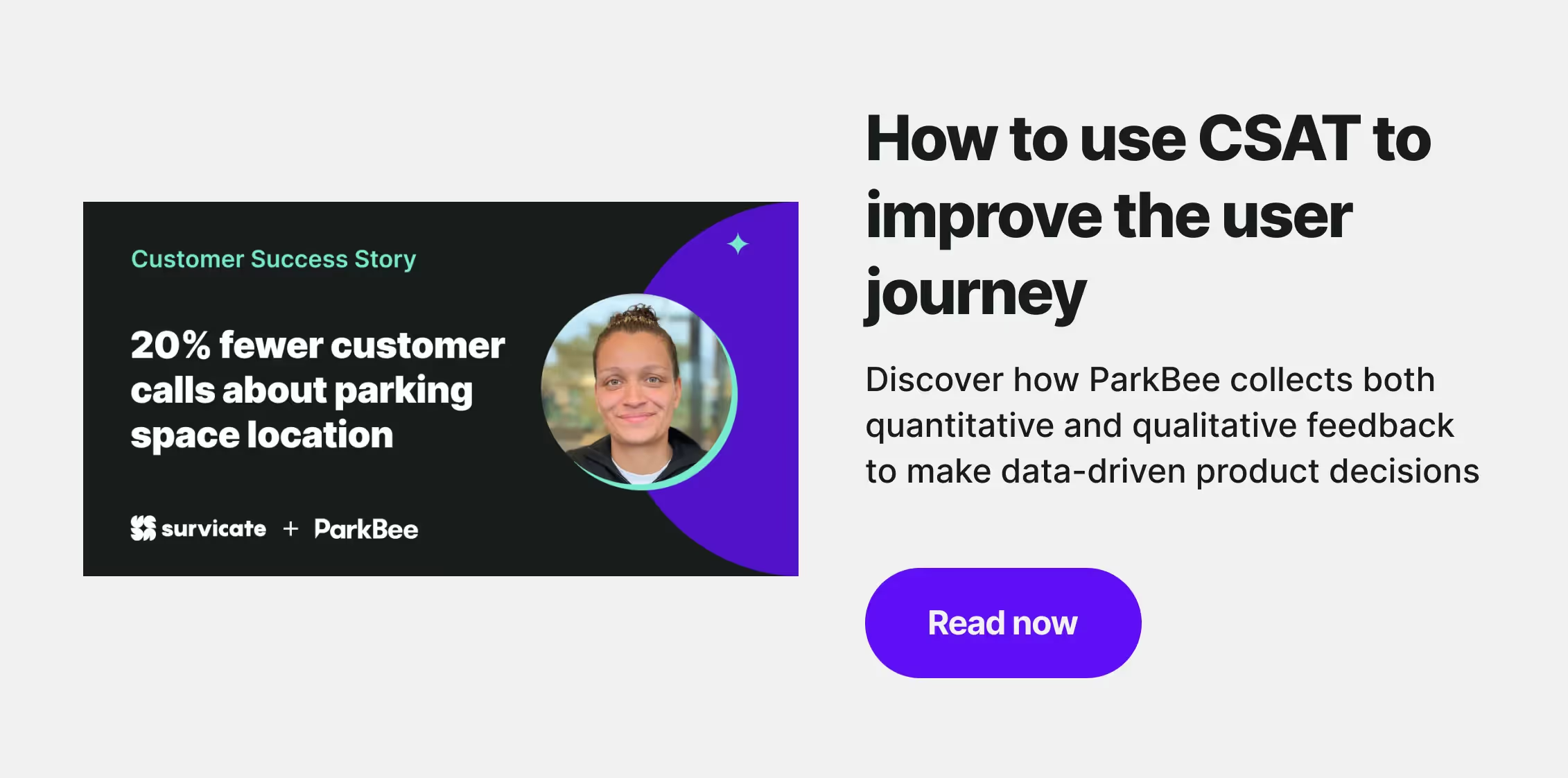
ParkBee’s strategy of integrating survey data with tools like Looker allowed them to monitor trends in real-time and make data-driven improvements to their service. With the insights gained from Survicate, ParkBee enhanced customer experience, increased operational efficiency, and consistently refined its parking solutions across multiple locations.
Looking for more inspiration? There are many more customer stories to explore!
The easiest way to measure customer satisfaction
Asking the right question is the key to researching customer satisfaction. Of course, you can ask questions such as ‘How satisfied are you?' but the answers won't provide you with very detailed and substantive conclusions.
It's always better to ask more specific questions. The answers will clearly show you what works well and which areas of your activity need improvements and how urgent they are. While creating a survey, you can also include questions that are not directly related to customer satisfaction but are important to you.
For example: Ask how customers found out about you, what their demographics are (roles, parental status, etc.—anything that will help you tailor services to their needs), or whether they used any similar products before.
The choice depends on what exactly you want to research and your target audience.
You can learn how to build your ideal customer audience in order to better tailor your services or products with our customer segmentation guide.
Often, it's better to create and send one survey with six to eight questions than to create one survey with five questions to research customer satisfaction, and send another short survey later on to research something else.
Regardless of what kind of survey you'd like to send, with Survicate you can create one effortlessly with AI, find the right one in our templates library, or just do it from the scratch. There’s also AI-powered Insights Hub and Research Assistant—features to analyze the results and identify key insights from your surveys (but not only!).
With our free trial, you'll get a taste of our Growth plan for 10 days. What's not to like? Sign up for free and start measuring customer satisfaction today!

.avif)






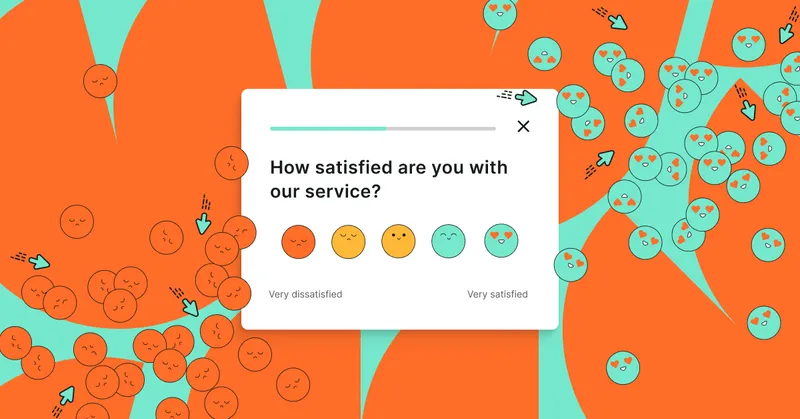
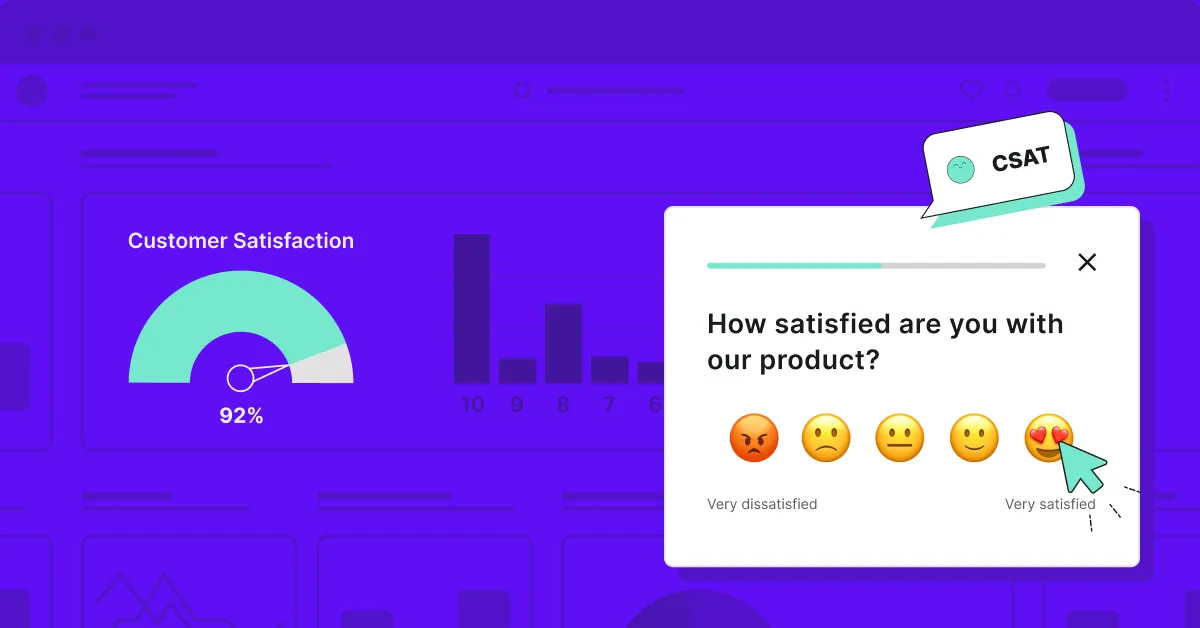
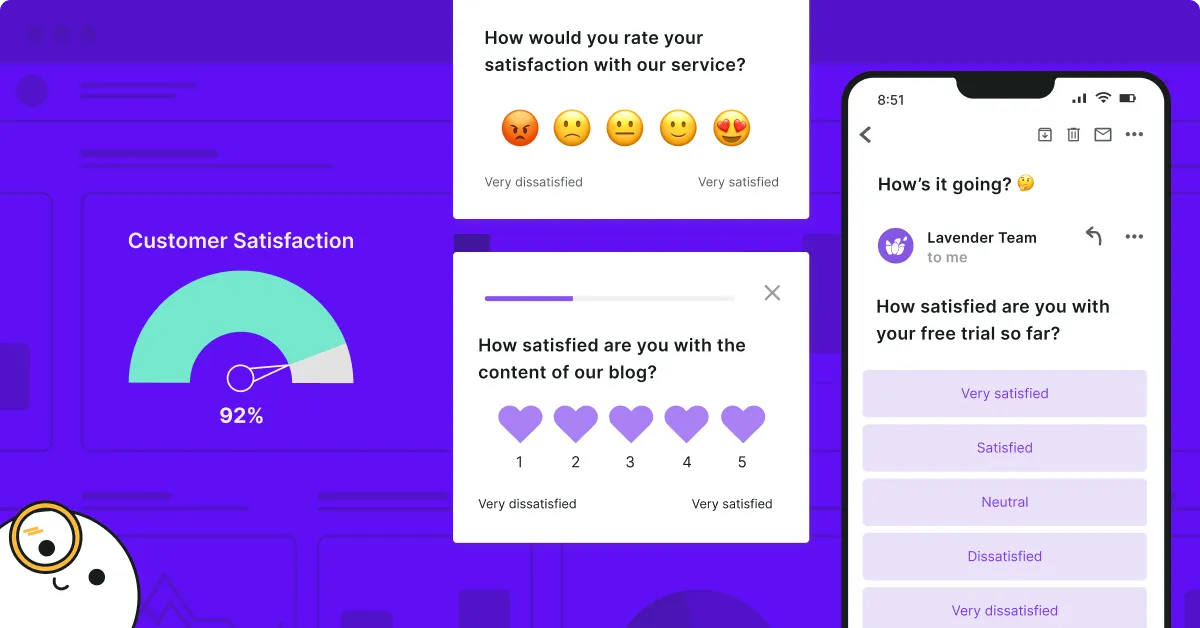
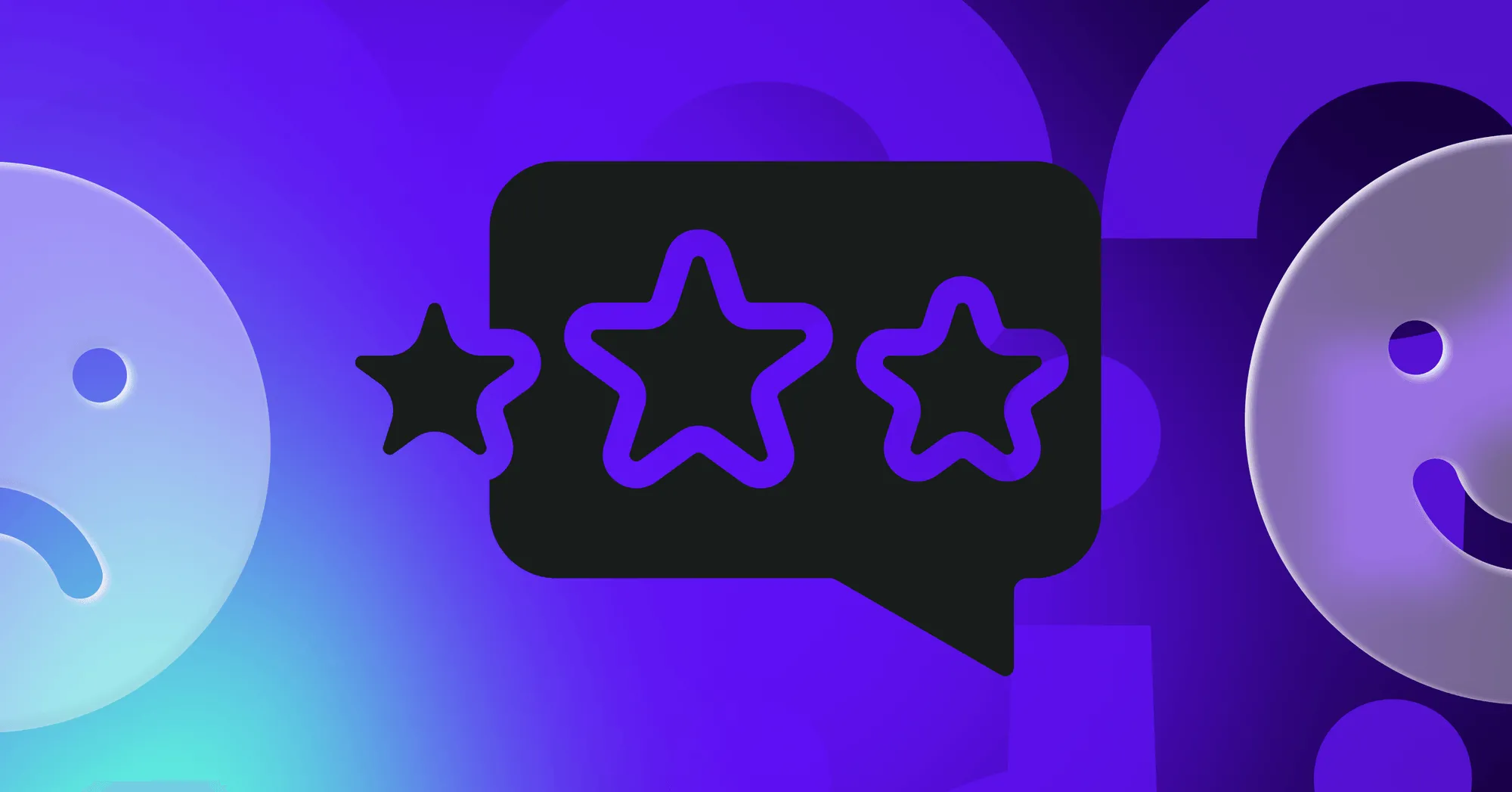
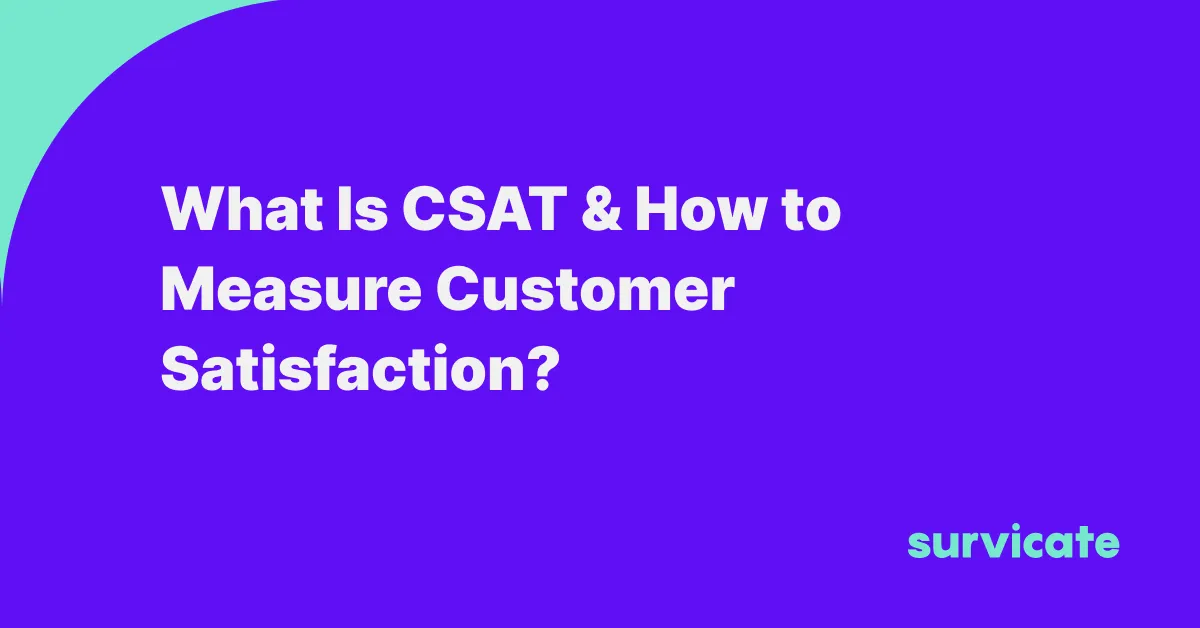
.svg)

.svg)



